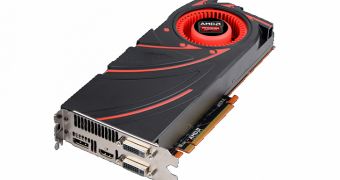Advanced Micro Devices hasn't actually announced anything about upcoming Radeon R9 Series 260 and 255 graphics cards, but there are other sources of information that reveal their impending arrival.
Said sources of information are the update to the website itself, showing the two in the Radeon R9 section of the OEM product page.
The other is the driver information (.inf) file of Catalyst 13.12 WHQL, which includes mentions of three device IDs reminiscent of the names.
So, even if AMD doesn't actually release a PR statement about the boards (possible, since they won't be available via retail), the data on them already exists.
We have said that the boards won't sell via retail because these are OEM cards, meaning that they'll only show up as part of pre-configured desktops, but we digress.
The Radeon R9 260 is powered by a 28nm Bonaire silicon with 896 stream processors, 56 TMUs (texture mapping units), a 128-bit GDDR5 VRAM interface (2 GB memory in total), a GPU core clock of 1,100 MHz, a memory frequency of 6.5 GHz and a bandwidth of 104 GB/s.
Power is provided by a single PCI Express 6-pin input, so the systems that the boards land in will definitely be mid to low-end ones.
Meanwhile, the Radeon R9 255 is powered by the Cape Verde GPU, also designed on the 28 nm process technology.
This chip has a clock of 930 MHz, 512 stream processors, 32 TMUs, 2 GB of GDDR5 VRAM at 6.5 GHz, a bandwidth of 104 GB/s and (128-bit interface) and, again, a single 6-pin power socket.
No clue when computers featuring them will appear, and how many they will be. It's certain that they'll have to contend with basic PCs featuring Intel CPUs (which have integrated graphics) and computers powered by AMD's own APU collection (which also have integrated graphics, only better ones, full GPUs versus Intel's iGPs).

 14 DAY TRIAL //
14 DAY TRIAL //